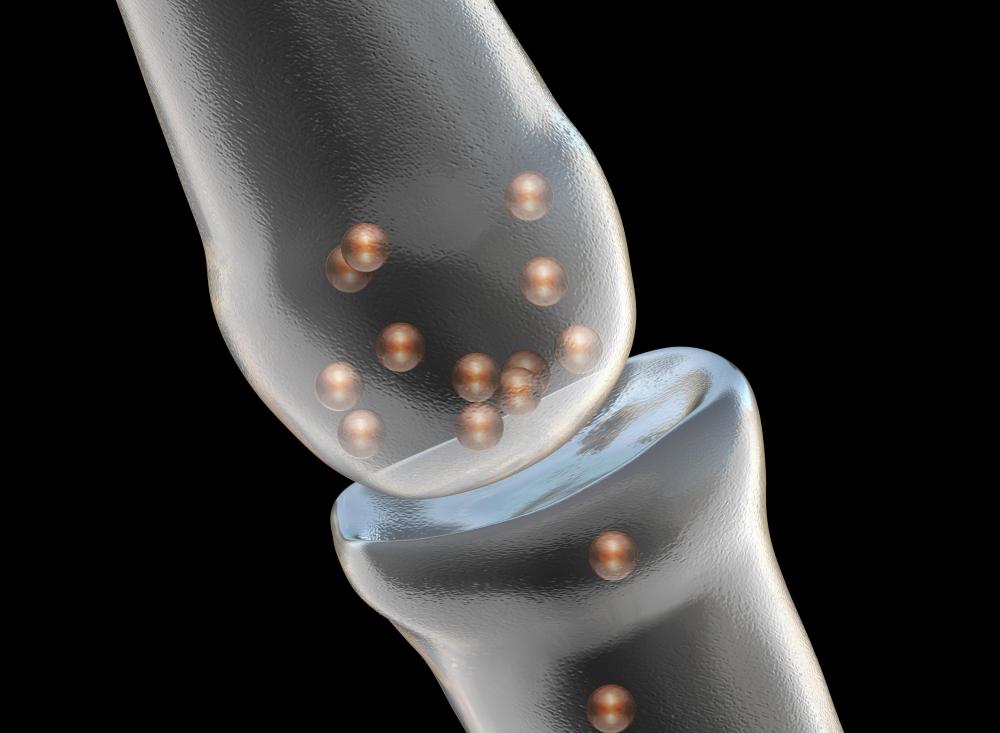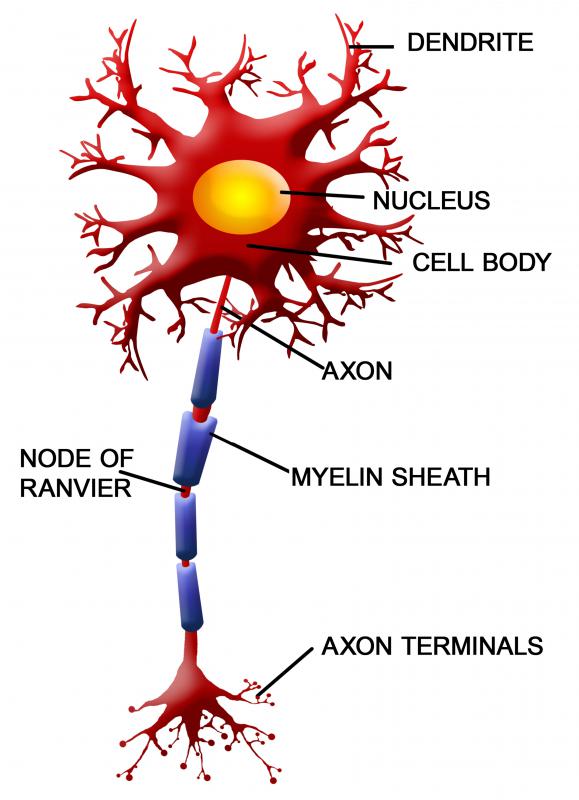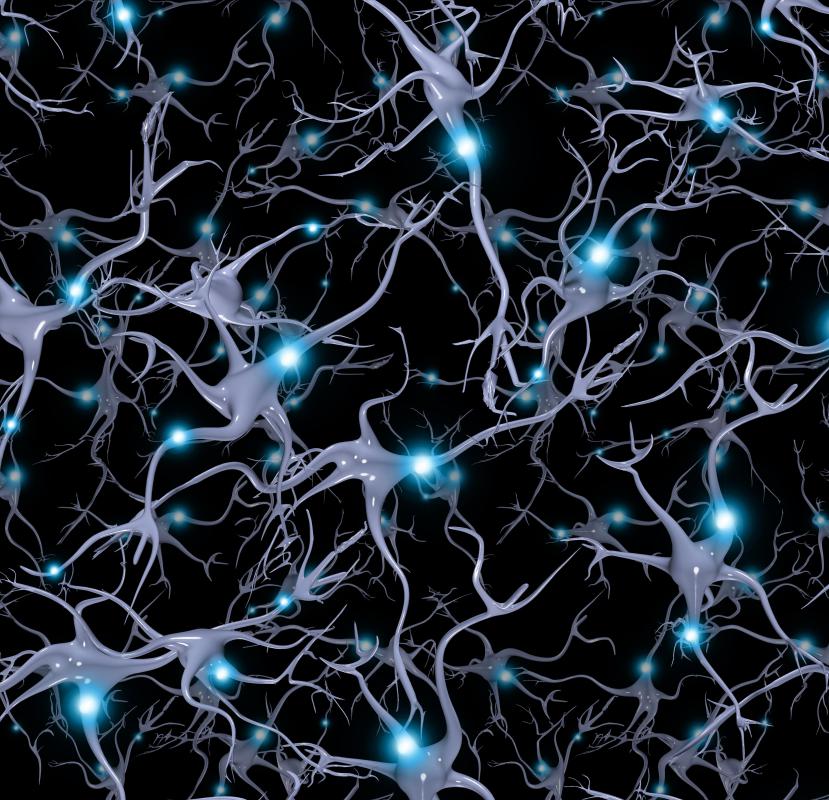At TheHealthBoard, we're committed to delivering accurate, trustworthy information. Our expert-authored content is rigorously fact-checked and sourced from credible authorities. Discover how we uphold the highest standards in providing you with reliable knowledge.
What Is the Function of an Axon?
An axon is found on the end of a nerve cell in the body, known as a neuron, and its primary function is to conduct electrical signals from that neuron to receptor sites known as dendrites on other neuron surfaces. While an axon and a dendrite are not in actual physical contact with one another, when an electrical signal passes to the end of an axon, it causes an electro-chemical reaction in bubble-like structures between the two materials known as vesicles. These vesicles release chemical charges called neurotransmitters into the synaptic gap between the axon end and dendrite receptor sites. The firing of these charges are known as synaptic responses, and the function of an axon is to transmit these signals in large numbers as a form of data processing within the human or animal brain.
The axon looks like a tail attached to a neuron cell, and is one of the largest and most important structures of nerve cells in the body. Neurons can have a variety of different axon structures, from just one axon tail to several that branch off to different nearby neurons and exponentially increase the complexity of the way that the nervous system and brain functions. The size of an axon varies from a length of 0.1 millimeters to up to 2 millimeters in length, and many thousands of them can be bundled together to create nerve fibers as well. Regardless of how complex a neuron is, the function of an axon is usually required for the neuron to serve its purpose.

Another important function of an axon is to enhance signal transmission through the use of myelin, which forms a protective sheath that surrounds it. Myelin is a type of fatty substance that acts as an electrical insulator for axon signals and can speed their transmission along the fiber, though the substance is not present on all axons. Where myelin is present, it is periodically broken up along the axon to look like a string of sausages surrounding the axon. Where gaps exist, these are known as nodes of Ranvier, named after the French pathologist Louis-Antoine Ranvier who discovered them in the late 19th century. The nodes allow for a break in the insulating or dampening effect of the electrical impulse as it travels down the axon, so that it can be amplified at periodic points.

Though some nerve cells do not contain axons and use dendrites alone to transmit information, most contain a basic structure consisting of common elements like a soma or main cellular body, and at least one attached axon. Where structures vary, the differences are based on what use the cells serve, such as the various sensory neurons that are tuned to tactile sense where they exist in skin, audio vibrations in the inner ear, and for other senses, such as temperature, taste, and smell. Motor neurons use the function of an axon signal to contract muscle cells along the body's skeletal structure, as well as in the heart and intestinal tract. All of these various neurons rely on interneurons as well, which exist throughout the body and serve as intermediary transmitters between sensory and motor neurons, as well as brain-based neurons as a form of non-localized synaptic system or secondary brain structure that interconnects the nervous system of the entire human body.
AS FEATURED ON:
AS FEATURED ON:

















Discussion Comments
I’ve always been fascinated with the workings of the brain, and about a year ago I read that neurons can shoot signals both ways through the axon and that it actually helps to strengthen neuronal connections. I don’t exactly remember where I read it but I would love to find more studies that look into this. Has anyone else heard this and do you know other studies and research that support this finding?
Post your comments